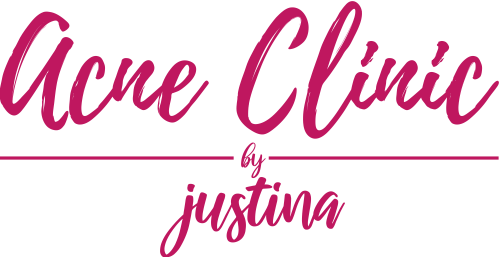FOLLICULITIS
Don’t mistake one condition from the other. There is a skin condition called malassezia folliculitis, formerly known as pityrosporum folliculitis, that is caused by yeasts (fungi) of the genus malassezia that which can look just like acne. It looks like small, non-inflamed bumps that frequently shows up on the forehead, but can be anywhere on the face or body. This skin condition fooled me for years; and i remember being so frustrated that this “acne” wouldn’t respond to acne treatments or products. Oftentimes, people can have a combination of both acne and folliculitis.
What is folliculitis?
It is an inflammation of the hair follicles most often caused by a fungal or yeast infection. It can remain dormant for long periods of time and then flare up with humid weather. There are bacterial forms as well and one must be tested to know which it is. (however, trying to find a doctor to test for it has been extremely exasperating – they think it’s acne too….). We can tell that is folliculitis by the way it extracts much differently than an acne lesion. Also, if it’s a condition that “comes and goes” then that is a clue that is folliculitis and not acne.
It can be caused from the extended use of antibiotics, the use of steroids, oily skin, humidity, occlusive clothing, heavy moisturizers and the use of hot tubs/spas.
How to treat folliculitis?
• Mandelic or ketoconazole cleansers and mandelic serums are great as an anti-fungal remedy.
• Keep the affected areas dry – applying “gold bond powder” can help keep the skin dry (on the body).
• Avoid sugar and yeast containing foods (bread, alcohol, processed/frozen foods, sandwich meat and dairy).
• Cotton clothing and cotton sheets are best. Avoid use of fabric softener.
• Antifungal supplements that can help.
Antifungal supplements
Select one or two and rotate every few weeks:
• Coconut oil (or caprylic acid)
• Undecylenic acid (bioactive nutrients combines this with two other antifungals: neem and grapefruit seed oil)
• Olive leaf
• Oil of oregano
• ACV (tablets or liquid)
• Garlic
• Berberine
Probiotic supplements – especially for those who have been on antibiotics for a long time. Probiotics don’t need to be rotated out as often. They can be taken for several months at a time, then taken out of the diet for a week or two and then restarted again.
To further treat this condition the right way, the first step is always scheduling a condition with your acne specialist.
